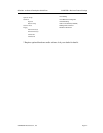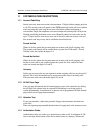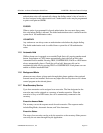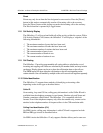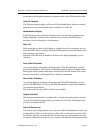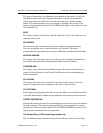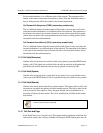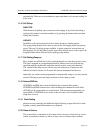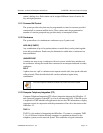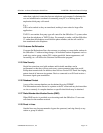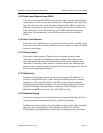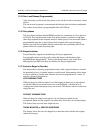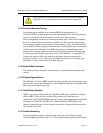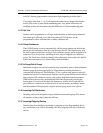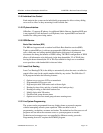
OfficeServ 12 General Description Guide/Ed.01 CHAPTER 4. Business Feature Package
© SAMSUNG Electronics Co., Ltd. Page 4-12
automatically. There are no extra buttons to press and there is no lost time looking for
a free zone.
1.1.16 Call Pickup
DIRECTED
With directed call pickup, users can answer calls ringing at any station by dialing a
code plus that station’s extension number or by pressing the feature button and then
dialing the extension.
GROUPS
In addition, calls can be picked up from a station group in a similar manner.
The group pickup feature allows users to answer any call ringing within any pickup
group. There are 10 pickup groups available. A station cannot be in more than one
pickup group. To use this feature, station users either dial the access code or press the
assigned feature button followed by the pickup group number.
1.1.17 Call Waiting/Camp-on
Busy stations are notified that a call is waiting(camped-on) when they receive a tone.
The tone is repeated at a programmable interval. phones receive an off-hook ring
signal through the speaker and single line stations receive a tone in the handset.
The volume of the camp-on tone can be set by the station user. Camped-on calls
follow Forward No Answer if a Forward No Answer destination has been set.
Optionally any station can be programmed to automatically camp-on to a busy station
instead of having to press the camp-on button or dial a camp-on code.
1.1.18 Centrex/PBX Use
CENTREX and PBX lines can be installed in lieu of central office trunks.
CENTREX and PBX feature access codes including the command for hook-flash
(FLASH) can be stored under one touch buttons. Toll restriction programming can
ignore PBX or CENTREX access codes so that toll calls can be controlled when
using these services.
1.1.19 Chain Dialing
phone users may manually dial additional digits following a speed dial call or chain
together as many speed dial numbers as are required.
1.1.20 Class of Service
The system allows a maximum of 30 station classes of service. Each class of service
can be customized in memory to allow or deny access to features and to define a



